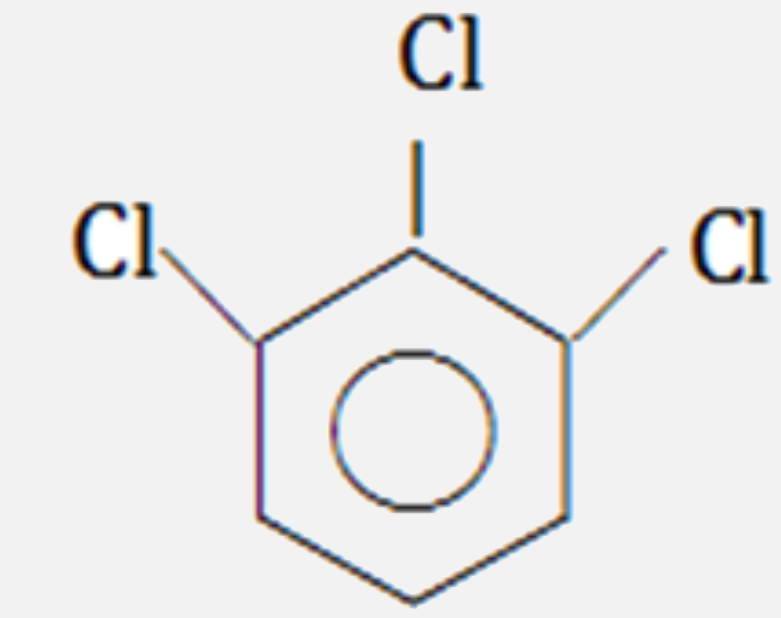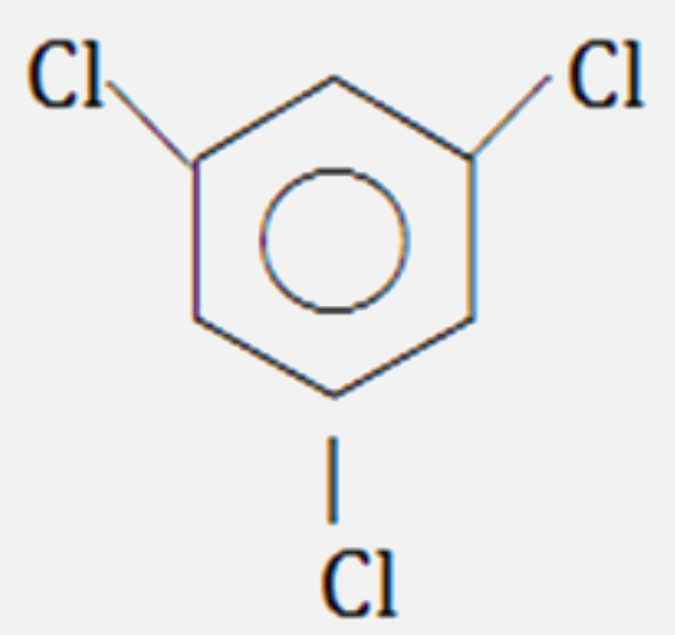Which carbonyl compound has maximum dipole moment ?




The correct Answer is:D
To determine which carbonyl compound has the maximum dipole moment, we need to analyze the structures of various carbonyl compounds and their substituents.
1. Understanding Dipole Moment:
- The dipole moment (μ) is a measure of the separation of positive and negative charges in a molecule. It is calculated as the product of the charge (q) and the distance (d) between the charges:
μ=q×d
- It is a vector quantity, meaning it has both magnitude and direction.
2. Analyzing Carbonyl Compounds:
- Carbonyl compounds generally contain a carbon atom double-bonded to an oxygen atom (C=O). The oxygen atom is more electronegative than carbon, leading to a partial negative charge (δ-) on the oxygen and a partial positive charge (δ+) on the carbon.
3. Identifying Substituents:
- The nature of the substituents attached to the carbonyl carbon can influence the dipole moment. Electronegative groups will pull electron density away from the carbonyl carbon, increasing the dipole moment.
4. Comparing Different Carbonyl Compounds:
- Consider a few carbonyl compounds:
- Aldehydes: Generally have one hydrogen and one alkyl group. The dipole moment is influenced by the alkyl group.
- Ketones: Have two alkyl groups attached to the carbonyl carbon. The dipole moment can be affected by the size and electronegativity of these groups.
- Carboxylic Acids: Have a hydroxyl group (-OH) which can contribute to a higher dipole moment due to the presence of both the carbonyl and hydroxyl groups.
- Esters: Similar to carboxylic acids but with an alkyl group instead of a hydrogen in the hydroxyl position.
5. Evaluating Stability and Conjugation:
- Conjugation and cyclic structures can stabilize certain compounds, affecting their dipole moments. For example, compounds that are cyclic and conjugated may have lower dipole moments due to resonance stabilization.
6. Conclusion:
- After analyzing the various carbonyl compounds and their substituents, the compound with the highest dipole moment is likely to be the one with the most electronegative substituents and minimal resonance stabilization. In this case, the compound D, which is cyclic and conjugated with a strong electronegative group (like Br), will exhibit the highest dipole moment due to the significant pull of electron density towards the electronegative atom.
Final Answer:
The carbonyl compound with the maximum dipole moment is compound D.
- The dipole moment (μ) is a measure of the separation of positive and negative charges in a molecule. It is calculated as the product of the charge (q) and the distance (d) between the charges:
μ=q×d
- It is a vector quantity, meaning it has both magnitude and direction.
- Carbonyl compounds generally contain a carbon atom double-bonded to an oxygen atom (C=O). The oxygen atom is more electronegative than carbon, leading to a partial negative charge (δ-) on the oxygen and a partial positive charge (δ+) on the carbon.
- The nature of the substituents attached to the carbonyl carbon can influence the dipole moment. Electronegative groups will pull electron density away from the carbonyl carbon, increasing the dipole moment.
- Consider a few carbonyl compounds:
- Aldehydes: Generally have one hydrogen and one alkyl group. The dipole moment is influenced by the alkyl group.
- Ketones: Have two alkyl groups attached to the carbonyl carbon. The dipole moment can be affected by the size and electronegativity of these groups.
- Carboxylic Acids: Have a hydroxyl group (-OH) which can contribute to a higher dipole moment due to the presence of both the carbonyl and hydroxyl groups.
- Esters: Similar to carboxylic acids but with an alkyl group instead of a hydrogen in the hydroxyl position.
- Conjugation and cyclic structures can stabilize certain compounds, affecting their dipole moments. For example, compounds that are cyclic and conjugated may have lower dipole moments due to resonance stabilization.
- After analyzing the various carbonyl compounds and their substituents, the compound with the highest dipole moment is likely to be the one with the most electronegative substituents and minimal resonance stabilization. In this case, the compound D, which is cyclic and conjugated with a strong electronegative group (like Br), will exhibit the highest dipole moment due to the significant pull of electron density towards the electronegative atom.
The carbonyl compound with the maximum dipole moment is compound D.
Topper's Solved these Questions
- CARBONYL COMPOUNDSBook:HIMANSHU PANDEYChapter:CARBONYL COMPOUNDSExercise:Level 2 (Q.26 To Q.50)
Explore 25 Videos
- CARBONYL COMPOUNDSBook:HIMANSHU PANDEYChapter:CARBONYL COMPOUNDSExercise:Level 2 (Q.51 To Q.75)
Explore 25 Videos
- CARBONYL COMPOUNDSBook:HIMANSHU PANDEYChapter:CARBONYL COMPOUNDSExercise:Level 1 (Q.51 To Q.1)
Explore 2 Videos
- CABOXYLIC ACIDS AND ITS DERIVATIVESBook:HIMANSHU PANDEYChapter:CABOXYLIC ACIDS AND ITS DERIVATIVESExercise:Subjective Type Problems
Explore 8 Videos
- CHEMISTRY IN DAILY LIFEBook:HIMANSHU PANDEYChapter:CHEMISTRY IN DAILY LIFEExercise:Integer Answer Type Problems
Explore 7 Videos
Similar Questions
Knowledge Check
Which has maximum dipole moment ?
A B
B C
C D
D
Which has maximum dipole moment ?
A B
B C
C D
D
Which compound have maximum dipole moment ?
A B
B C
C D
D

